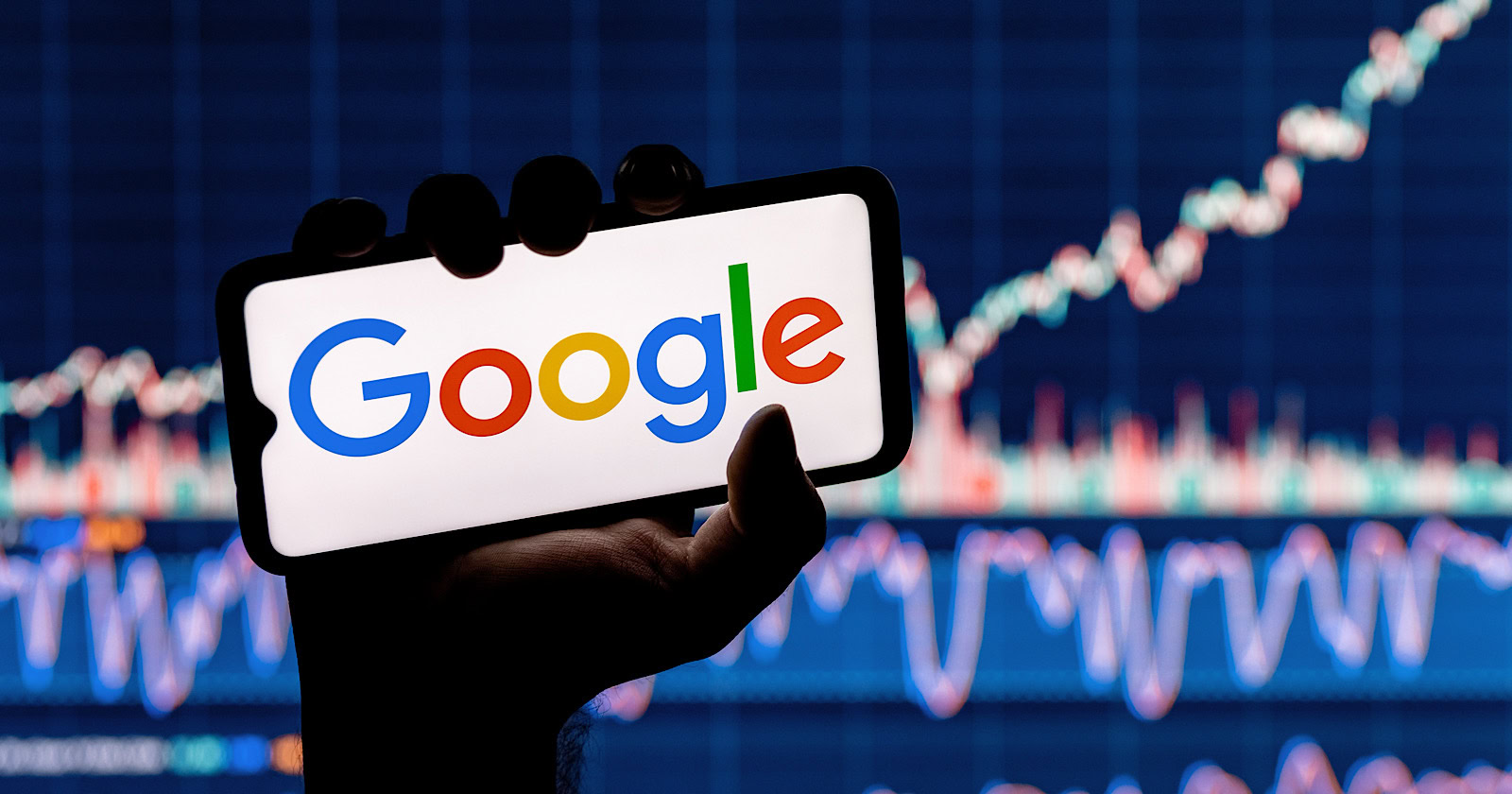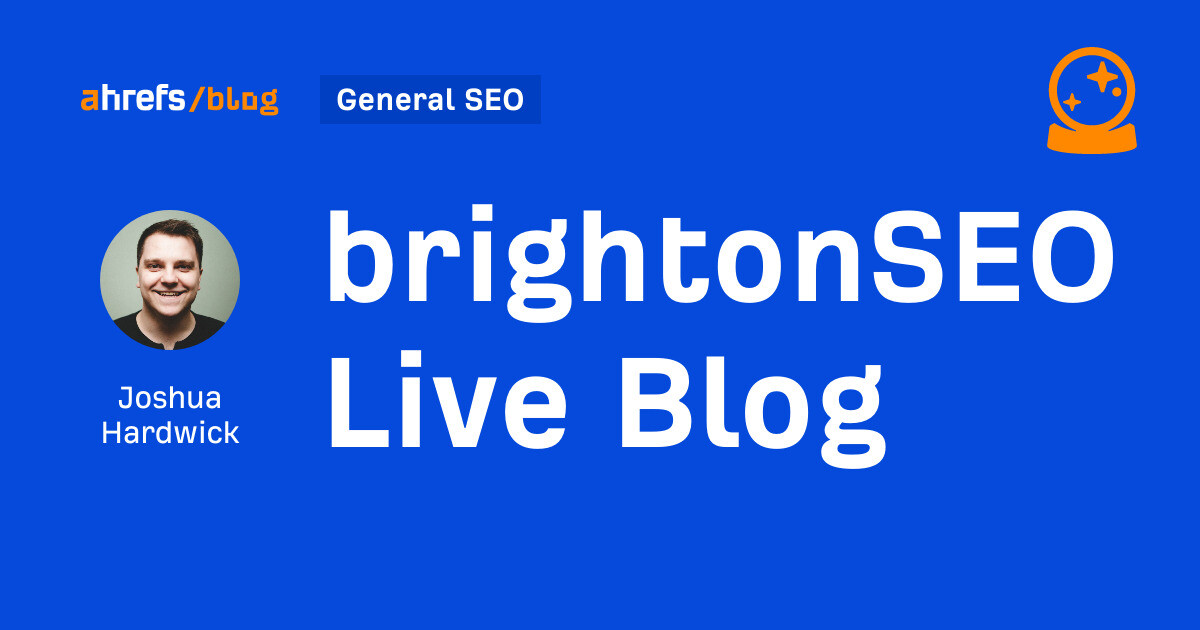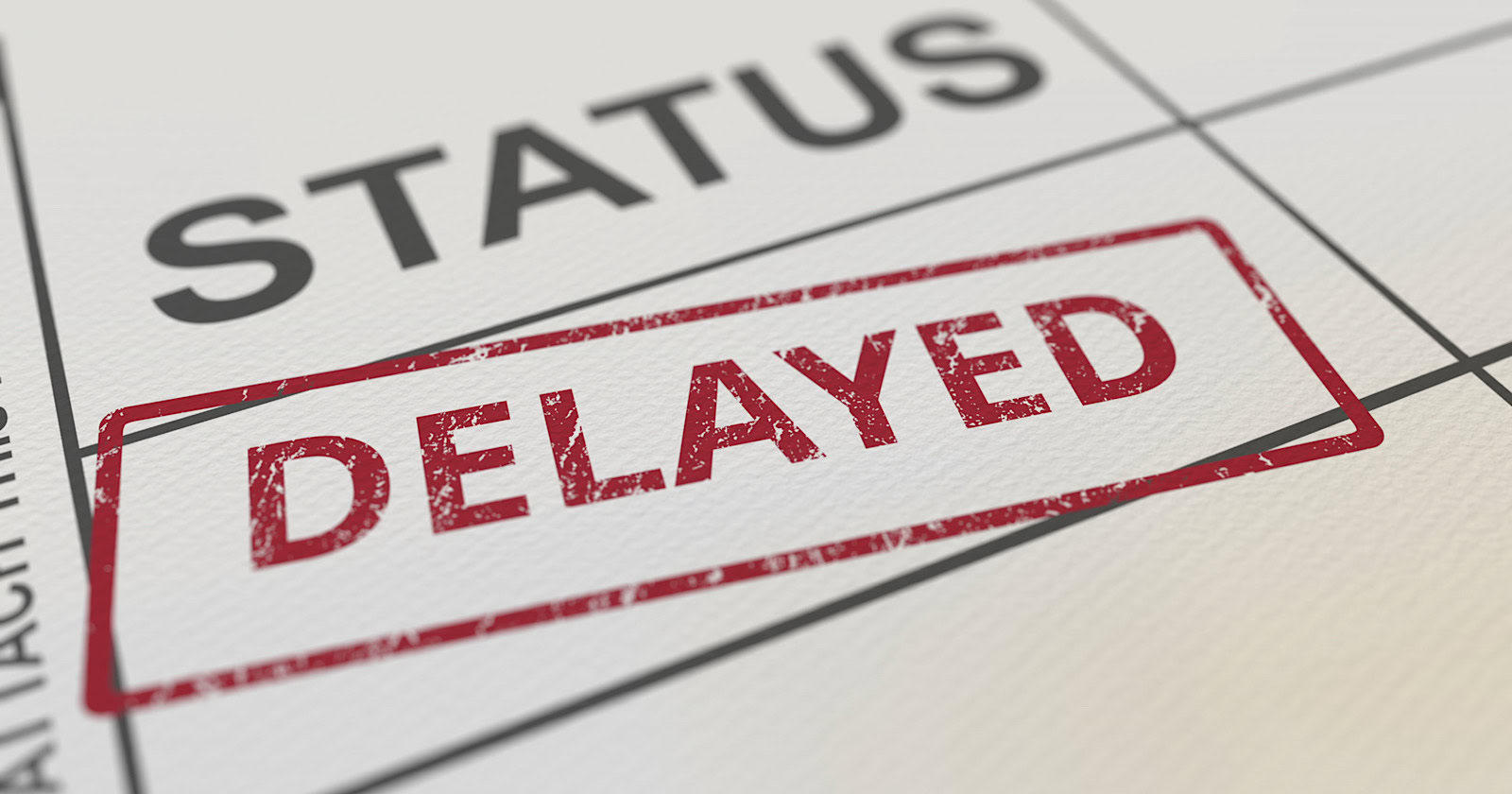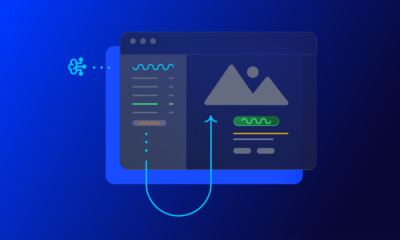SEO
Better Alternatives To ‘Click Here’

Nothing is more boring and unmotivating to a user than seeing a big “Click Here” or “Learn More” link.
As a user, they’re already researching a product or a service they want to purchase. Of course, they’re going to click links to learn more.
Going Beyond “Click Here” Or “Learn More”
So, how do we get users motivated to take the action that we want them to?
It begins by:
- Understanding user goals and user behavior.
- Establishing trust.
- Creating accessible, clearly labeled directions that inspire interest.
It sounds so easy in theory, but in truth, why are our webpages only converting at an average of 2.8% in the US?
Obviously, something is missing from our webpages. If 97.2% of us don’t convert on a webpage, we’re likely confusing our users on what we want them to do to some degree.
Let’s dive into how we can accomplish this.
While You’re Here, Go There Now
The trick to optimizing calls to action is to present the action at the precise moment when your website visitor is most interested in taking the next step.
If a user is met with a call to action before any information, do you think they are going to click on it?
There has to be compelling content preceding the link, as well as an accurate description of the landing page.
If the landing page isn’t what a user expected, every time you present another opportunity to leave the page, your user may not trust that you can help them solve their problem.
The call to action is clearly labeled in the example below.
Even better, it is obvious designers understand their customers’ fears over money, ease of use, customer confidence, and the use of color.
First Date Links
When your webpage visitor is ready to take action, they must feel confident that the link invitation is worthwhile, credible, and constructive.
When you present a new product offering, nothing should prevent your visitor from immediately seeing what it is.
We may begin by being sly, especially if we want something. I call these “First Date Links.”
 Screenshot by author, June 2022
Screenshot by author, June 2022The screenshot above is taken from an ecommerce website. What you see here is the entire top half of the homepage.
There is no text. There are no product images.
First-time visitors would need to know in advance what the company is selling.
With this website, first-time visitors are required to scroll down, wait for the gigantic images to load, and scan minimal text to gain a better understanding of the brand and its products.
The fun part of this “First Date Links” example is knowing that this particular brand runs this special or something similar to it every single day.
There is no incentive to “shop now” for regular customers and first-time visitors have no idea where that “shop now” button is taking them.
They’ve been presented with this link that will likely overwhelm them with choice and decision paralysis – and most likely leave the site.
Try adding specific promotions for your loyal customers, or even first-time customers, into your marketing strategy.
By creating specific promotions segmented by customer type, you’re showing that you understand what they’re searching for.
Trust, credibility, and being forthcoming with your story add spice to calls to action on websites and real-life too.
Scarecrow Links
If you have watched the original film, “The Wizard of Oz,” you will understand why I refer to these calls to action as “Scarecrow Links.”
These are calls to action that provide many choices, usually with vague labels and often to the same destination.
In the film, when Dorothy is traveling the Yellow Brick Road to find Oz, she comes upon the Scarecrow and asks for directions.
Dorothy: Now which way do we go?
Scarecrow: Pardon me. That way is a very nice way… [pointing]
Dorothy: Who said that?
[Toto barks at the Scarecrow]
Dorothy: Don’t be silly, Toto. Scarecrows don’t talk!
Scarecrow: It’s pleasant down that way too! [pointing in another direction]
Dorothy: That’s funny. Wasn’t he pointing the other way?
Scarecrow: Of course, people do go both ways [pointing in both directions]. That’s the trouble. I can’t make up my mind. I haven’t got a brain. Only straw.
Sometimes, calls to action are placed within webpage content at a moment when we really don’t want choices. We just want to be directed to that cool thing you just showed us.
In the example below, the top CTA is the best option because the destination is clearly defined and is the desired user task.
 Screenshot by author, June 2022
Screenshot by author, June 2022If the company wants customers to learn more about curvy jeans, they can provide this information on the landing page that presents sorting options when they click to shop all the curvy jeans.
The smaller link to details would make more sense if it explained what the details are about.
Is it a size chart? Pricing?
What does that link do for us that “Learn more” doesn’t offer?
What does the user really want to do here after they have been shown images of curvy jeans?
Link Optimization Is More Than A Label
This next example is a mixture of a button, text sentence, and text sentence with a clickable icon overlaying a large header image.
If you were to watch someone using your website during a live session, you would most likely watch them mouse over the button, the text, and the text with the icon to see which one is going to go somewhere they want to go.
For this example, the “Learn more” button label provides no information about what we are going to learn.
It is the most visible CTA and the eyes of the person in the image are facing the button, which is a designer trick because studies show we look to see what the face is looking at.
How can we optimize the CTA for this page?
First, remove the “Learn More” button. We are going to give it an upgrade.
The text below the image, in tiny font size, is not linked. It asks a question, but the user must look for where to get the answer.
It also asks a question that may not be as important or interesting as the one following it. I would remove the entire “Want to get to know us better” sentence.
The more compelling story is why.
The button can be larger and placed in line with the model’s eye gaze. The button label is the invitation to “See why we do what we do” and link that to their story.
Not only does this narrow the choice to one link for one lead task, but it is easier for screen reader software to announce the link and direct visitors listening to the page.

Links with labels such as “Learn more,” “Read more,” “Shop now,” “Submit,” “Click here,” “Download,” and “Continue” are common.
However, these links are probably less likely to be clicked on than a more specific, inviting link.
Don’t be afraid to experiment to optimize calls to action by inviting the action. Don’t be afraid to tell the user what you want them to do by clicking that link.
If anything, you’re guiding them on their purchase decision journey.
Now, sometimes we may get a little too enthusiastic with our link text.
 Screenshot by author, June 2022
Screenshot by author, June 2022Every Call To Action Is A Risk
Remember that when providing a call to action, it must be placed at the moment when you inspired your reader to leave their train of thought.
Every call to action is a risk. At the minimum, your link should:
- Have a clear label with the exact destination.
- Be easy to see and read.
- Be compelling to the person.
- Present itself at the exact moment when it is most useful.
- Not have competition (other links) nearby.
- Navigate to the desired task that will provide a benefit to your user.
As humans, our attention span is already short.
Each time a call to action takes them forward, they may have forgotten where they just were.
It is important to support tasks with well-organized information architecture and navigation that provides signals for a sense of place.
Calls to action are sometimes annoying interruptions.
What additional incredibly fascinating information is hiding behind “Learn more” that is so compelling that you have interrupted their thought process?
It better be worth it.
Conclusion
We have a small window of time to catch a user’s attention.
Using generic language like “Click Here” or “Learn More” won’t cut it anymore. When creating call-to-actions for a user, try to reiterate what exactly you want them to do.
Don’t insert CTA links for the sake of having them or taking up space.
Rethink your link strategy by viewing it from a user’s point of view: Is there more than one link option? Are they both needed? Are they clear enough for a user to take action?
Furthermore, your content leading to that call-to-action should be enticing enough for them to want to take action.
More Resources:
Featured Image: Motortion Films/Shutterstock
In-post image #4 created by author, June 2022
SEO
Google Declares It The “Gemini Era” As Revenue Grows 15%

Alphabet Inc., Google’s parent company, announced its first quarter 2024 financial results today.
While Google reported double-digit growth in key revenue areas, the focus was on its AI developments, dubbed the “Gemini era” by CEO Sundar Pichai.
The Numbers: 15% Revenue Growth, Operating Margins Expand
Alphabet reported Q1 revenues of $80.5 billion, a 15% increase year-over-year, exceeding Wall Street’s projections.
Net income was $23.7 billion, with diluted earnings per share of $1.89. Operating margins expanded to 32%, up from 25% in the prior year.
Ruth Porat, Alphabet’s President and CFO, stated:
“Our strong financial results reflect revenue strength across the company and ongoing efforts to durably reengineer our cost base.”
Google’s core advertising units, such as Search and YouTube, drove growth. Google advertising revenues hit $61.7 billion for the quarter.
The Cloud division also maintained momentum, with revenues of $9.6 billion, up 28% year-over-year.
Pichai highlighted that YouTube and Cloud are expected to exit 2024 at a combined $100 billion annual revenue run rate.
Generative AI Integration in Search
Google experimented with AI-powered features in Search Labs before recently introducing AI overviews into the main search results page.
Regarding the gradual rollout, Pichai states:
“We are being measured in how we do this, focusing on areas where gen AI can improve the Search experience, while also prioritizing traffic to websites and merchants.”
Pichai reports that Google’s generative AI features have answered over a billion queries already:
“We’ve already served billions of queries with our generative AI features. It’s enabling people to access new information, to ask questions in new ways, and to ask more complex questions.”
Google reports increased Search usage and user satisfaction among those interacting with the new AI overview results.
The company also highlighted its “Circle to Search” feature on Android, which allows users to circle objects on their screen or in videos to get instant AI-powered answers via Google Lens.
Reorganizing For The “Gemini Era”
As part of the AI roadmap, Alphabet is consolidating all teams building AI models under the Google DeepMind umbrella.
Pichai revealed that, through hardware and software improvements, the company has reduced machine costs associated with its generative AI search results by 80% over the past year.
He states:
“Our data centers are some of the most high-performing, secure, reliable and efficient in the world. We’ve developed new AI models and algorithms that are more than one hundred times more efficient than they were 18 months ago.
How Will Google Make Money With AI?
Alphabet sees opportunities to monetize AI through its advertising products, Cloud offerings, and subscription services.
Google is integrating Gemini into ad products like Performance Max. The company’s Cloud division is bringing “the best of Google AI” to enterprise customers worldwide.
Google One, the company’s subscription service, surpassed 100 million paid subscribers in Q1 and introduced a new premium plan featuring advanced generative AI capabilities powered by Gemini models.
Future Outlook
Pichai outlined six key advantages positioning Alphabet to lead the “next wave of AI innovation”:
- Research leadership in AI breakthroughs like the multimodal Gemini model
- Robust AI infrastructure and custom TPU chips
- Integrating generative AI into Search to enhance the user experience
- A global product footprint reaching billions
- Streamlined teams and improved execution velocity
- Multiple revenue streams to monetize AI through advertising and cloud
With upcoming events like Google I/O and Google Marketing Live, the company is expected to share further updates on its AI initiatives and product roadmap.
Featured Image: Sergei Elagin/Shutterstock
SEO
brightonSEO Live Blog

Hello everyone. It’s April again, so I’m back in Brighton for another two days of Being the introvert I am, my idea of fun isn’t hanging around our booth all day explaining we’ve run out of t-shirts (seriously, you need to be fast if you want swag!). So I decided to do something useful and live-blog the event instead.
Follow below for talk takeaways and (very) mildly humorous commentary. sun, sea, and SEO!
SEO
Google Further Postpones Third-Party Cookie Deprecation In Chrome

Google has again delayed its plan to phase out third-party cookies in the Chrome web browser. The latest postponement comes after ongoing challenges in reconciling feedback from industry stakeholders and regulators.
The announcement was made in Google and the UK’s Competition and Markets Authority (CMA) joint quarterly report on the Privacy Sandbox initiative, scheduled for release on April 26.
Chrome’s Third-Party Cookie Phaseout Pushed To 2025
Google states it “will not complete third-party cookie deprecation during the second half of Q4” this year as planned.
Instead, the tech giant aims to begin deprecating third-party cookies in Chrome “starting early next year,” assuming an agreement can be reached with the CMA and the UK’s Information Commissioner’s Office (ICO).
The statement reads:
“We recognize that there are ongoing challenges related to reconciling divergent feedback from the industry, regulators and developers, and will continue to engage closely with the entire ecosystem. It’s also critical that the CMA has sufficient time to review all evidence, including results from industry tests, which the CMA has asked market participants to provide by the end of June.”
Continued Engagement With Regulators
Google reiterated its commitment to “engaging closely with the CMA and ICO” throughout the process and hopes to conclude discussions this year.
This marks the third delay to Google’s plan to deprecate third-party cookies, initially aiming for a Q3 2023 phaseout before pushing it back to late 2024.
The postponements reflect the challenges in transitioning away from cross-site user tracking while balancing privacy and advertiser interests.
Transition Period & Impact
In January, Chrome began restricting third-party cookie access for 1% of users globally. This percentage was expected to gradually increase until 100% of users were covered by Q3 2024.
However, the latest delay gives websites and services more time to migrate away from third-party cookie dependencies through Google’s limited “deprecation trials” program.
The trials offer temporary cookie access extensions until December 27, 2024, for non-advertising use cases that can demonstrate direct user impact and functional breakage.
While easing the transition, the trials have strict eligibility rules. Advertising-related services are ineligible, and origins matching known ad-related domains are rejected.
Google states the program aims to address functional issues rather than relieve general data collection inconveniences.
Publisher & Advertiser Implications
The repeated delays highlight the potential disruption for digital publishers and advertisers relying on third-party cookie tracking.
Industry groups have raised concerns that restricting cross-site tracking could push websites toward more opaque privacy-invasive practices.
However, privacy advocates view the phaseout as crucial in preventing covert user profiling across the web.
With the latest postponement, all parties have more time to prepare for the eventual loss of third-party cookies and adopt Google’s proposed Privacy Sandbox APIs as replacements.
Featured Image: Novikov Aleksey/Shutterstock
-

 PPC7 days ago
PPC7 days ago19 Best SEO Tools in 2024 (For Every Use Case)
-
SEARCHENGINES6 days ago
Daily Search Forum Recap: April 19, 2024
-
SEARCHENGINES7 days ago
Daily Search Forum Recap: April 18, 2024
-

 WORDPRESS6 days ago
WORDPRESS6 days agoHow to Make $5000 of Passive Income Every Month in WordPress
-

 WORDPRESS5 days ago
WORDPRESS5 days ago13 Best HubSpot Alternatives for 2024 (Free + Paid)
-

 SEO7 days ago
SEO7 days ago25 WordPress Alternatives Best For SEO
-

 WORDPRESS6 days ago
WORDPRESS6 days ago7 Best WooCommerce Points and Rewards Plugins (Free & Paid)
-

 MARKETING6 days ago
MARKETING6 days agoBattling for Attention in the 2024 Election Year Media Frenzy
















You must be logged in to post a comment Login